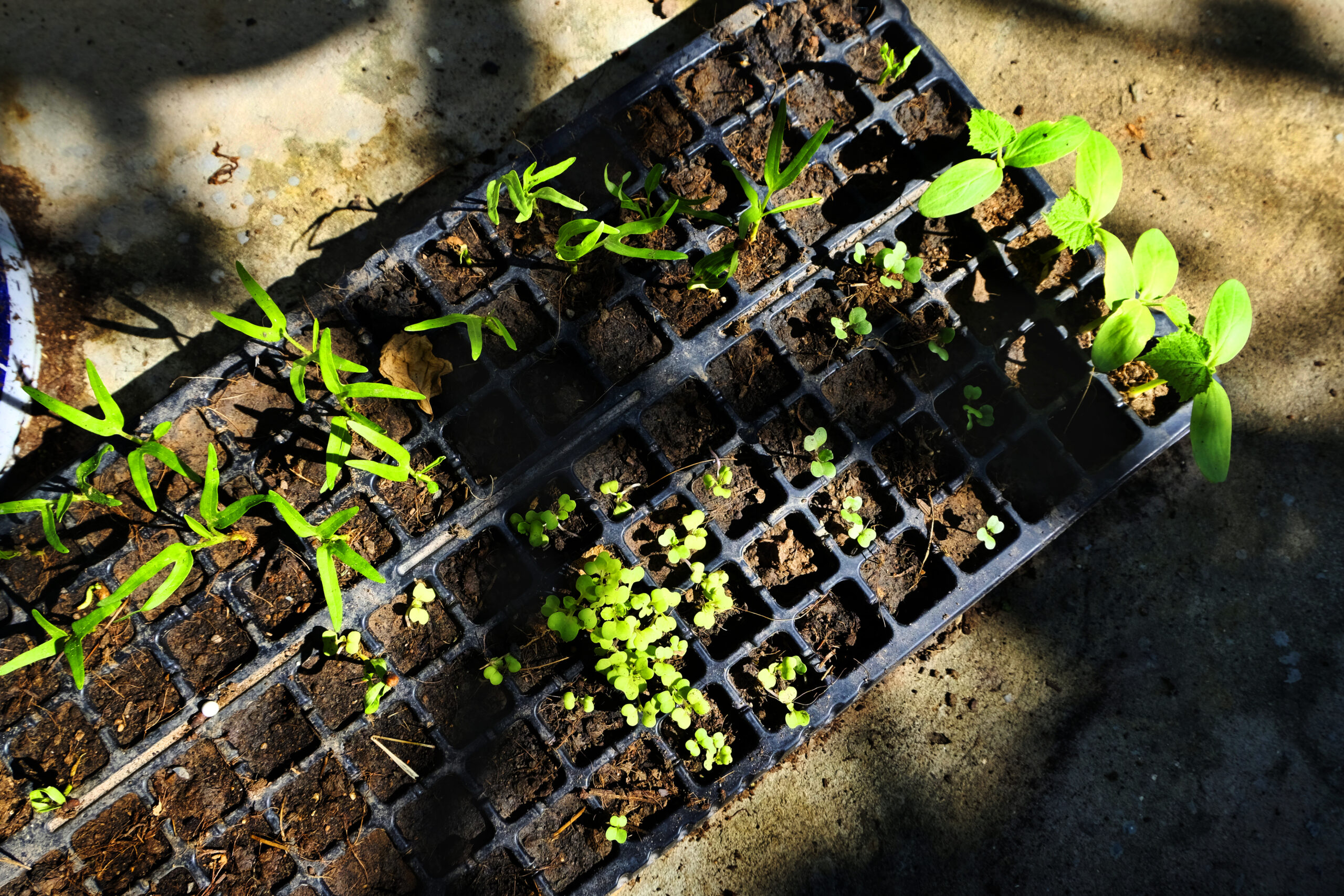
Ever dreamed of transforming your windowsill into a lush jungle overflowing with fresh herbs and vibrant blooms? Indoor seed starting promises vibrant greenery all year round, but for beginner botanists, the journey can be a bit… thorny. Don’t worry, fellow sprout saviors! Before you bury your dreams beneath a pile of wilting seedlings, let’s dodge those pesky pitfalls together. Buckle up, grab your trowel, and prepare to say “hasta la vista” to common seed-starting mistakes!
Indoor Seed Starting Mistakes to Dodge
Overzealous Watering: The Drowning Dilemma
One of the most common Indoor Seed Starting Mistakes is the tendency to drown your seedlings with excessive water. Let’s explore why this happens and how to keep your plants afloat:
- The Issue: Overwatering can lead to waterlogged soil, causing roots to rot and seedlings to wilt.
- The Fix: Develop a watering schedule based on the moisture needs of your specific seeds. Ensure proper drainage in your containers to prevent water accumulation.
2. Ignoring the Light Factor: A Dark Secret
Indoor gardening often means limited access to natural sunlight. Neglecting the light requirements of your seedlings can cast a shadow on their growth. Shedding light on this issue:
- The Issue: Insufficient light can result in leggy seedlings, weak stems, and poor overall growth.
- The Fix: Invest in quality grow lights and position them at an optimal distance from your seedlings. Rotate trays regularly to ensure even light exposure.
3. Soil Selection Slip-Ups: The Foundation Matters
Choosing the wrong soil for your indoor seedlings is a foundational mistake that can stunt their growth. Let’s dig deeper into this common pitfall:
- The Issue: Inappropriate soil choices can lead to poor drainage, compacted soil, or inadequate aeration.
- The Fix: Opt for a well-draining seed starting mix that provides the right balance of nutrients. Consider adding perlite or vermiculite for improved aeration.
4. Premature Transplanting: The Rushed Relocation
Impatience often leads to the Indoor Seed Starting Mistake of transplanting seedlings too early. Understanding the delicate nature of young plants is essential:
- The Issue: Premature transplanting can shock seedlings, disrupt their growth, and compromise their overall health.
- The Fix: Wait until seedlings have developed sturdy roots and at least two sets of true leaves before transplanting them into larger containers or the garden.
5. Neglecting Temperature Needs: The Climate Conundrum
Indoor environments can vary in temperature, and overlooking the specific needs of your seeds can result in less-than-ideal growing conditions:
- The Issue: Fluctuating or extreme temperatures can hinder germination and slow down seedling development.
- The Fix: Research the temperature preferences of your seeds and maintain a consistent, appropriate environment. Consider using heat mats for warmth during germination.
6. Inadequate Ventilation: Stale Air Stagnation
Overlooking the importance of proper air circulation in your indoor gardening space is a mistake that can impact the overall health of your seedlings:
- The Issue: Stale air can create a breeding ground for diseases and hinder the exchange of gases essential for plant growth.
- The Fix: Use fans to promote air circulation, open windows periodically, and avoid overcrowding seedlings to ensure they receive fresh air.
7. Poor Seed Quality: Starting with the Best
Neglecting the quality of your seeds is a common oversight that can lead to disappointing results. Let’s explore why seed quality matters:
- The Issue: Low-quality seeds may have lower germination rates and can result in weak, unhealthy seedlings.
- The Fix: Source seeds from reputable suppliers, check expiration dates, and consider seed viability tests to ensure robust germination.
8. Incorrect Seed Depth: The Shallow or Deep Dilemma
Planting seeds at the wrong depth is a mistake that can impact germination and seedling development. Let’s delve into the depth dilemma:
- The Issue: Planting seeds too shallow or too deep can lead to uneven germination and weak seedlings.
- The Fix: Follow seed packet instructions for optimal planting depth. Generally, small seeds are planted shallow, while larger seeds require deeper planting.
9. Skipping Hardening Off: The Transition Oversight
Overlooking the process of hardening off seedlings before transplanting them outdoors is a common mistake. Understanding the significance of this step:
- The Issue: Directly moving seedlings from indoor conditions to the harsh outdoor environment can shock and stress the plants.
- The Fix: Gradually expose seedlings to outdoor conditions over a period of 7-10 days before transplanting. Start with short durations and gradually increase exposure.
